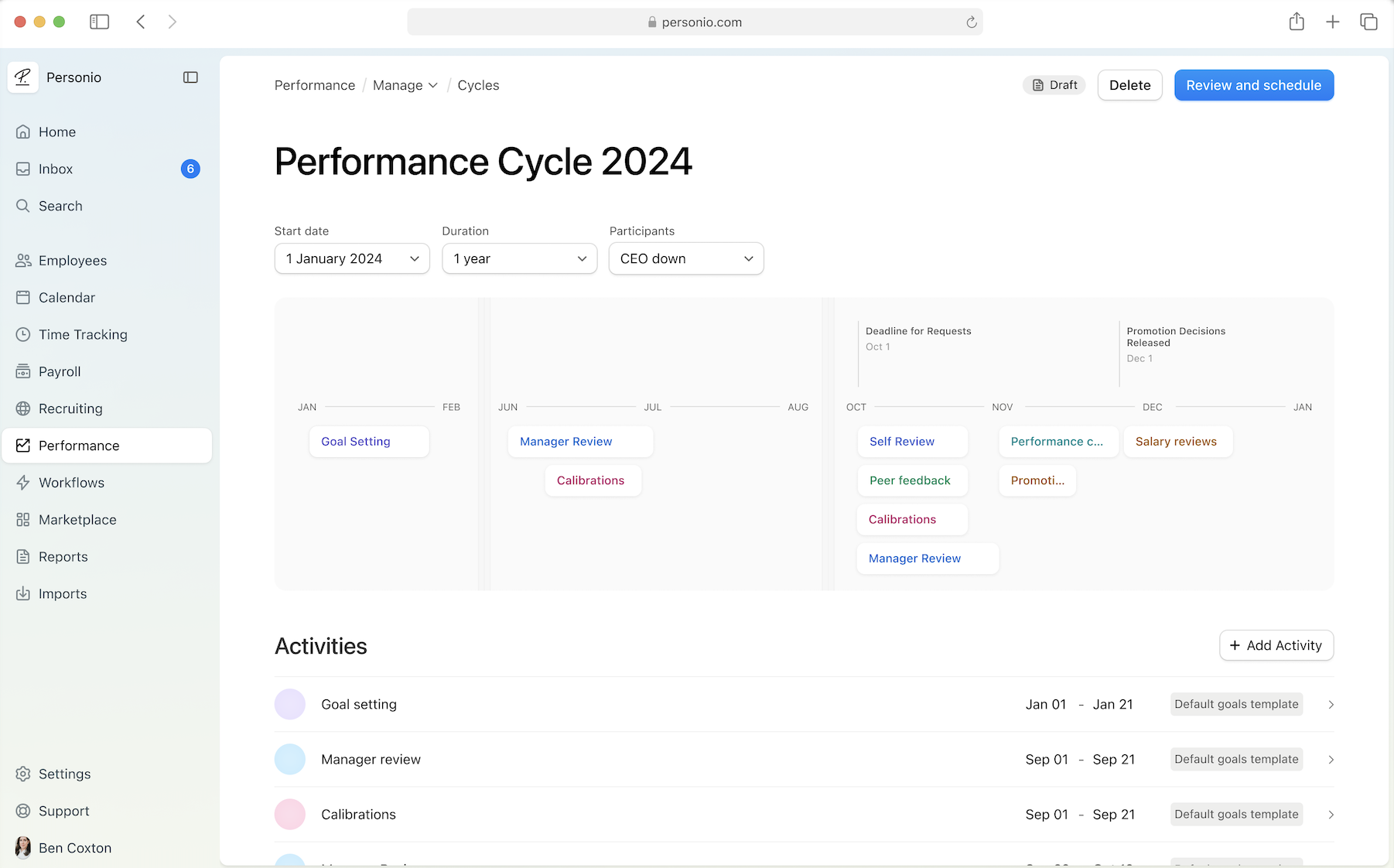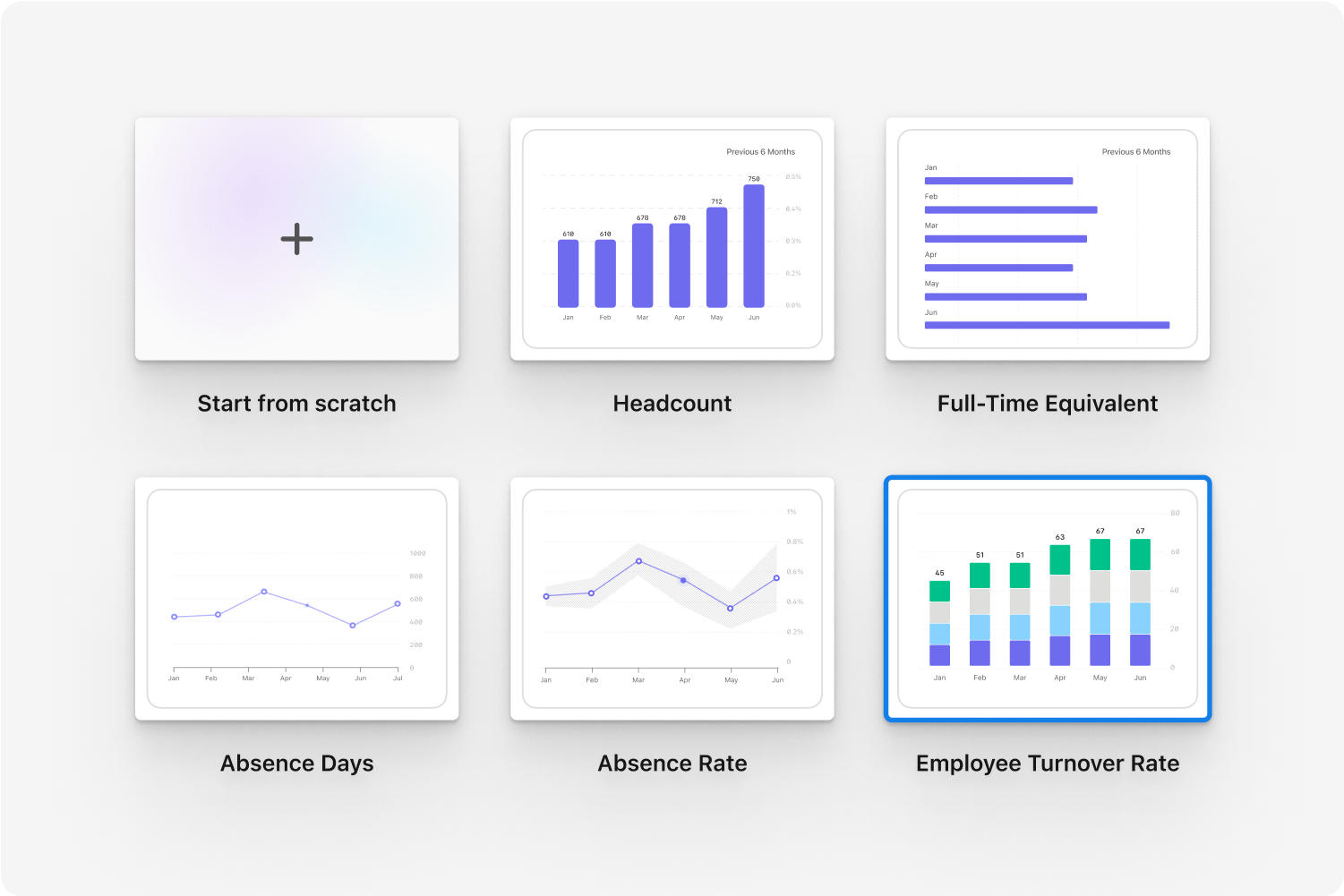
Revolutionise your processes
Check out the leading performance review software solutions to transform your workplace evaluations.
Read our guideLatest Blog Posts
How to Write SMART Goals: Guide & Template
If you manage people or conduct performance reviews, part of your job is helping employees achieve business objectives and improve in key development areas. However, setting up your employees for success is only possible if you offer them clear direction.
SMART goals empower you and your team by providing a tried, tested and repeatable framework for setting and achieving objectives.
Because SMART goals offer a clear means of setting expectations and tracking progress, they’re also ideal for holding people accountable.
SMART goals framework explained
The SMART goal framework provides a structured approach for setting and achieving objectives. The SMART acronym stands for specific, measurable, achievable, relevant and time-bound.
Each word is an instruction, guiding you to write SMART goals that drive success.
Specific: Clearly define what you want to achieve.
Measurable: Establish criteria to track progress.
Achievable: Ensure the goal is realistic and attainable.
Relevant: Align the goal with broader business objectives.
Time-bound: Set a clear timeframe for achieving the goal.
Why is a SMART goal more effective?
A SMART goal is effective because it’s achievable. Unlike a vague or random goal – like ‘improve business ROI’ – a goal created from SMART criteria provides a roadmap with milestones and clearly defined objectives.
This structured approach enhances accountability, offering a way to measure employee performance over set periods.
Both managers and employees can make use of SMART goals. The framework empowers teams to think deeply about their work, set realistic expectations and define what success looks like for each task. Using this framework means that everyone understands their role in the bigger picture, reducing ambiguity and increasing focus.
Having measurable criteria allows you to track progress and adjust as needed, keeping the goal achievable and relevant. And time-bound elements create a sense of urgency, helping teams and individuals to prioritise tasks.
In contrast, random goals lack these structured elements, making it difficult to gauge success, maintain motivation and allocate resources effectively.
There are many popular alternatives to SMART goals, including PACT goals (purposeful, actionable, continuous, and trackable). PACT goals encourage continuous progress. This is a strength and a disadvantage, as defining continuous and trackable progress can be complex.
In comparison, SMART goals add detail and structure without being overwhelming. This makes them broadly applicable to many situations
Manage employee performance and development

Help your people reach their goals with specialised software that promotes employee growth.
Learn moreCreating SMART goals: step-by-step
Want to harness the power of SMART goals for your team? Sit down with each individual and follow these steps to create specific, measurable, achievable and relevant goals during their performance reviews.
Specific goals
Specific goals provide clear direction and focus, ensuring that the individual under assessment understands precisely what they need to achieve. To create a specific goal, consider the following:
What exactly needs to be accomplished?
Who will be responsible for achieving it?
Imagine you are conducting a review with an Account Manager in your marketing team. A general goal might be to ‘improve work performance.’ But, this goal lacks specificity, measurable criteria, achievability, relevance and a time frame – making it vague and challenging to implement effectively.
Instead, you want to dive into the details. As an example, you could note down:
Specific goal: Decrease the time taken to onboard new marketing accounts.
This goal is specific. It’s clear what your employee needs to accomplish: improve efficiency around onboarding new clients.
Measurable goals
Now that you have a specific goal, you must ensure it’s measurable. Without measurable criteria, it’s difficult for both you and your employees to determine whether they’re making progress or when they’ve achieved what you set out to do.
To create a measurable goal, consider the following:
How will you know when the goal is accomplished?
What is the indicator of progress?
How much or how many?
Building on the specific goal above, you can make it measurable by adding a quantifiable target.
Measurable goal: Decrease the time taken to onboard new marketing accounts by 50%.
At this point, the Account Manager has a clear-cut target of reducing onboarding time by half.
One significant advantage of measurable goals is they provide an avenue to identify high performers in your organisation. With quantifiable targets, it’s easier to pinpoint employees who consistently go above and beyond in their achievements. In turn, you can focus on empowering this sought-after talent pool.
Powerful HR analytics and reporting

Get meaningful insights about employee performance and progression with Personio’s people analytics.
Discover our reportingAchievable goals
Next, you need to take a step back and consider what is achievable when accounting for the employee’s resources and constraints. Setting overly lofty goals can lead to frustration and demotivation if they are not achieved. The key is to ensure the goals are challenging but within reach.
To create an achievable goal, consider the following:
Does your employee have the necessary resources and skills to achieve this goal?
Is the goal realistic and attainable?
What constraints might they encounter?
Following on with our example above:
Achievable goal: Decrease the time taken to onboard new marketing accounts by 50% by implementing a new task management system and providing weekly progress updates.
A task management system empowers the employee to achieve their goal through its features and tools. As a manager receiving weekly progress updates, you can analyse this input and use it alongside your HR analytics and reporting data to unlock insights into employee progress, satisfaction, and development.
Relevant goals
Maintaining motivation and discipline when pursuing goals can be challenging for employees, especially if they don’t understand the relevance to the broader business needs.
To create a relevant goal, consider the following:
What impact will this goal have once it’s achieved?
How does it align with other long-term business plans and initiatives?
Why is this goal important now?
Adding to our example, we want to emphasise the goal’s relevance.
Relevant goal: Decrease the time taken to onboard new marketing accounts by 50% by implementing a new task management system and providing weekly progress updates. This supports the company’s objective of ensuring onboarding is completed more efficiently, boosting overall productivity and client satisfaction.
Time-bound goals
A time-bound goal has a timeframe for completion, creating a sense of urgency and helping to focus efforts. Without a deadline, goals can easily be deprioritised or forgotten about.
To create a time-bound goal, consider the following:
What is the deadline for achieving this goal?
What milestones need to be reached along the way?
How will we track progress over time?
We can make our goal time-bound by including a specific deadline and a regular review period.
Time-bound goal: Decrease the time taken to onboard new marketing accounts by 50% by implementing a new task management system and providing weekly progress updates. This supports the company’s objective of ensuring onboarding is completed more efficiently, boosting overall productivity and client satisfaction. The new systems and processes should be in place within the next quarter.
Related: Ever feel like there’s not enough time in the day? Use these time-saving tactics to streamline your tasks and get more done.
SMART goals template
Get started on creating SMART goals with your team using this template.
INITIAL GOAL | What goal do you have in mind? |
S: SPECIFIC | What needs to be accomplished? Who should be included? What steps are required? |
M: MEASURABLE | How will we know when it is accomplished? What is the indicator of progress? How much or how many? |
A: ACHIEVABLE | Do you have the resources and skills to achieve this goal? Is it realistic? What constraints are you dealing with? |
R: RELEVANT | Why is this goal important now? How does it align with overall business objectives? |
T: TIME-BOUND | What’s the deadline, and is it realistic? |
SMART GOAL | Write a new SMART goal based on the above answers. |
Set SMART and ambitious goals for the future

By setting SMART goals with your team, you can create a structured path to success that aligns with business objectives and fosters professional growth and accountability.
At Personio, we offer an all-in-one HR platform that streamlines employee development and performance management. Our tools, including task lists, automated reminders and robust analytics, make setting and tracking SMART goals easy.
To learn more about how Personio can help you drive team performance, check out our employee performance and development tool.
FAQs
What are examples of SMART goals?
Examples of SMART goals include:
Increase employee retention rates by 10% over the next year by implementing an employee engagement program and conducting quarterly satisfaction surveys.
Reduce the average time to hire new employees from 60 days to 45 days within the next six months by streamlining the recruitment process and utilising new hiring software.
What is an example of a good and bad SMART goal?
Good SMART goal: Revise the onboarding process and conduct follow-up surveys to improve employee onboarding satisfaction scores from 75% to 85% within the next six months.
Bad SMART goal: Make the onboarding process better.
What are some common mistakes when setting SMART goals?
Not involving relevant parties in the goal-setting process, which leading to a lack of buy-in and support
Setting too many goals at once, which can dilute focus and resources
Failing to adjust goals based on feedback and changing circumstances
Overlooking the need for regular check-ins and progress reviews
Not providing adequate resources or support to achieve the goals
How often should SMART goals be reviewed?
SMART goals should be reviewed regularly to ensure progress is on track and to make any necessary adjustments. A common practice is to review goals monthly or quarterly, depending on the timeframe and complexity of the goals.
Can SMART goals be applied to personal development?
Yes, SMART goals can create a clear path to achieving personal aspirations and improving well-being.
What are the benefits of using SMART goals in performance reviews?
SMART goals provide the following benefits during performance reviews:
Clear and objective criteria for evaluating performance
Enhanced focus on specific and relevant objectives
Improved communication between managers and employees
Increased motivation and accountability
A structured approach to professional development and career progression

